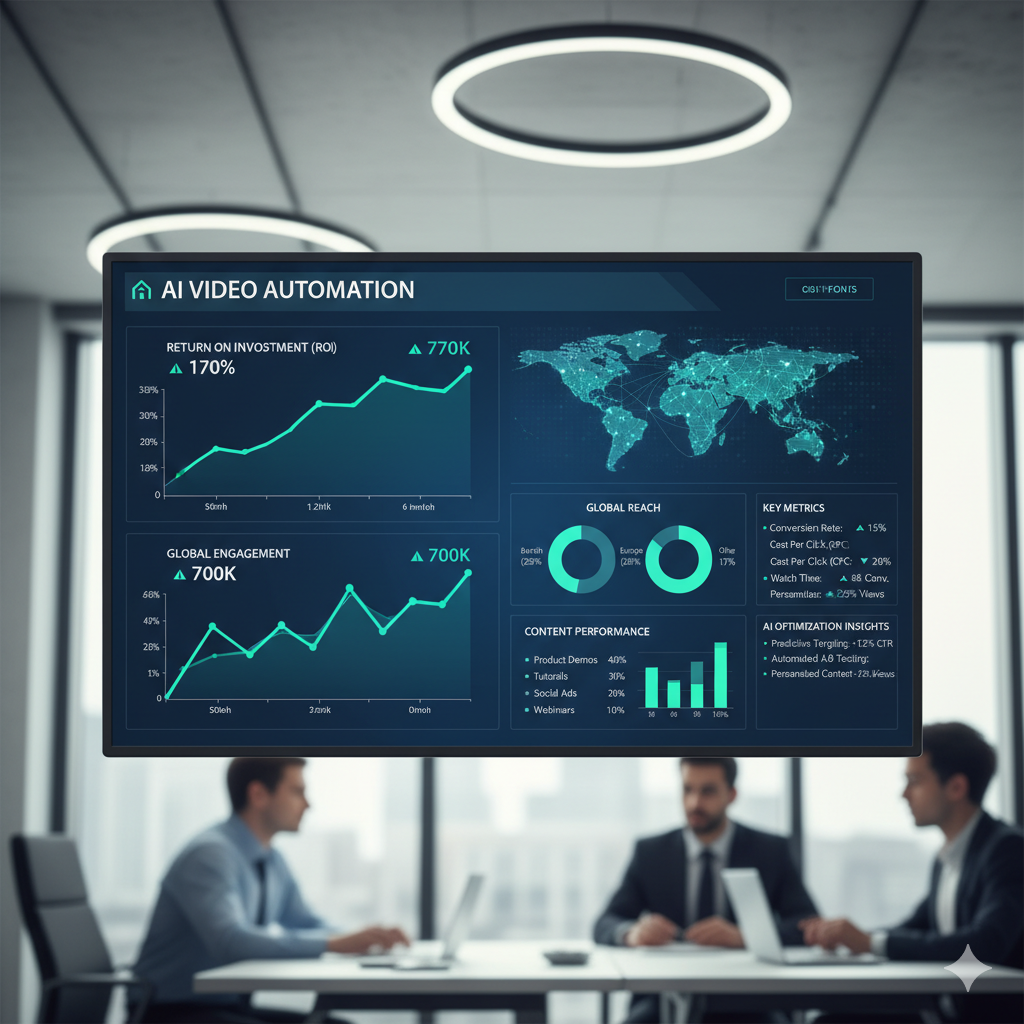Every marketer knows the brutal truth about video: it’s the most effective content format by a landslide, generating 1200% more shares than text and images combined, driving 80% higher conversion rates, and dominating consumer preference across every demographic. Yet 65% of businesses struggle to produce more than one video per month.

The reason is simple: traditional video production is expensive, time-consuming, and complex. A single polished product demo might cost £5,000–£15,000 and require weeks of production time involving scriptwriters, videographers, editors, voice actors, and coordinators. Want that video personalized for different customer segments? Triple the cost and timeline. Need it translated into five languages? Now you’re looking at months and budgets only enterprises can justify.
This impossible economics has kept video marketing largely out of reach for most businesses, confined to occasional hero content repurposed endlessly across channels despite diminishing returns.
But a revolution is underway. Platforms like HeyGen and Kaltura are using AI to shatter these constraints, enabling businesses to create personalized, multilingual, platform-optimized video content at a scale and cost that would have seemed impossible just two years ago.
The Video Marketing Paradox
Before exploring the solution, let’s examine the painful contradiction that’s frustrated marketing teams for years.
The effectiveness imperative. Every piece of data confirms that video outperforms all other content formats. Landing pages with video convert 80% better than those without. Email subject lines mentioning “video” increase open rates by 19%. Social posts with video generate 48% more views than those without. Customers watching product videos are 85% more likely to purchase. The evidence is overwhelming: if you want marketing that works, you need video.
The production reality. Traditional video production makes consistent output financially and operationally impossible for most businesses. Producing a professional video involves scripting, shooting, editing, voiceover work, and platform optimization. This takes weeks and costs thousands. Scaling that to multiple products, audiences, and languages becomes untenable.
The personalization and localization challenges. Modern marketing demands personalized, multilingual, and platform-optimized content. Yet traditional production models make these demands impractical, forcing marketers to rely on generic videos that underperform.
The result? Most businesses produce occasional video content, recycle it for months or years, and never achieve the consistent, high-performing video-first strategy they know would deliver results.
AI Video Creation: From Impossible to Instantaneous
The revolution these platforms enable centers on several breakthrough capabilities that demolish traditional production barriers:
AI avatar presenters. Instead of booking studios and talent, you can select from hundreds of realistic AI avatars or create a custom avatar of yourself or your team. These digital presenters deliver your script naturally with humanlike gestures and expressions.
Automated script-to-video conversion. You write a script, choose an avatar and setting, and the AI generates a full video in minutes — no filming, no editing, no retakes.
Voice cloning and synthesis. AI-generated voices are nearly indistinguishable from human speakers. You can clone your voice or use professional-quality voice models across dozens of languages.
Automatic translation and localization. AI translates and localizes content while maintaining cultural accuracy and natural lip-syncing, producing videos that sound natively delivered in any supported language.
Platform-specific optimization. Upload your video once, and the AI automatically creates versions optimized for YouTube, LinkedIn, Instagram, and TikTok — each adjusted for length, aspect ratio, and audience behavior.
Interactive and shoppable elements. Viewers can interact directly with videos — click to purchase products, explore features, or complete forms without leaving the player, increasing conversions by up to 24%.
Personalization at scale. The AI can automatically generate hundreds of personalized videos, customizing text, visuals, and voice lines for each recipient or audience segment — something that was once impossible.
Real-World Transformation: A Software Company Case Study
Before adopting AI video platforms, a B2B software company produced one flagship product demo video annually, spending around £12,000 per video. It tried to appeal to every audience — from enterprise teams to small businesses — and existed only in English despite 40% of their market being non-English speakers. Updating the video was slow and expensive, meaning the content often went stale.
After implementing HeyGen and Kaltura, their process transformed:
- They created a custom AI avatar of their CEO for brand consistency.
- From one master script, they produced six tailored versions for different customer segments.
- Each version was automatically translated into five languages, producing 36 localized videos in a single afternoon.
- The AI optimized versions for YouTube, LinkedIn, Instagram, and email — all automatically formatted for each platform.
- Sales reps began sending personalized demos, each addressing prospects by name, in their language, and with relevant use cases.
The impact was transformative:
- Video production costs dropped 92%.
- Website conversions rose 28%.
- International revenue increased 67%.
- Sales-qualified leads jumped 41% thanks to personalized video outreach.
- Marketing ROI improved 340%, with 15–20 new videos produced monthly instead of one per year.

Beyond Production Efficiency: Strategic Transformation
While the financial savings are impressive, the strategic benefits are even greater.
Test-and-learn velocity. Marketers can now test multiple video messages in hours instead of months, learning what performs best through real data.
True personalization. For the first time, personalization is practical at scale. Each audience can receive unique video messaging crafted specifically for their needs.
Real-time updates. Videos can be refreshed instantly when products, pricing, or market conditions change, ensuring content is always current.
Global parity. Every region receives equally professional content in their native language — no more prioritizing one market over another.
Sales enablement. Personalized video demos become standard practice, giving sales teams tools that dramatically improve engagement and response rates.
Implementation Best Practices
To get the most from AI video platforms:
- Start with frequent, high-impact content. Focus on demos, tutorials, or product explainers first.
- Invest in avatar authenticity. Custom avatars of real team members build trust and recognition.
- Create templates, not one-offs. Use dynamic variables to personalize at scale efficiently.
- Integrate with your existing systems. Connect CRMs, email tools, and analytics for seamless workflows.
- Empower your team. Train non-specialists to produce videos — the barrier to entry is gone.
The Future of Video Marketing
We’re witnessing a fundamental shift in marketing. Soon, AI-generated avatars will be indistinguishable from humans, videos will adapt in real time to each viewer, and AI will recommend creative strategies based on millions of analyzed campaigns.
The companies embracing AI-driven video today will dominate tomorrow’s markets through superior efficiency, personalization, and reach.
For businesses evaluating HeyGen and Kaltura, the economics are overwhelming. A technology that cuts costs by 90%, increases output 15x, and enables global personalization isn’t optional — it’s essential.
Your competitors are already adopting it. The only question is whether you’ll lead the transformation or play catch-up.
The video revolution is here. It speaks every language, personalizes every message, and converts at every touchpoint. Your marketing is either powered by AI video — or competing against it.

